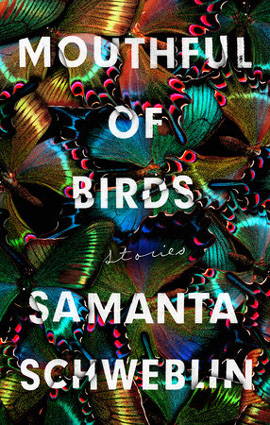Like many people, I was fascinated by the surreal atmosphere and ambiguous meaning of Argentinian writer Samanta Schweblin's novel “Fever Dream” when it first appeared in English a couple of years ago. Now a collection of her short fiction has just been published and it's of a similar sinister vibe with odd twists of logic that often veer into near nightmares. Here are stories of children that transform into butterflies, businessmen who are turned into farm hands, a dissatisfied wife who meets an amorous merman and a daughter whose new diet consists solely of consuming living birds. This subject matter could easily feel whimsical if it were written by another author, but Schweblin maintains elements of psychological truth so this fiction continues to feel real even if it's filled with the fantastical. Her stories often feel like puzzles where the meaning is tantalizingly close and I could solve it if I could just work out the intricately constructed design she's skilfully created. But, of course, these stories offer no definitive answers – just glimpses of the inexpressible fears, desires and carnage which simmer just under the surface of our everyday reality.
The way Schweblin approaches common themes from an unlikely angle brings out a new kind of emotional honesty. So subjects such as infidelity, miscarriages, eating disorders, spousal abuse, body image and depression are explored in these stories but in a way which defamiliarises the way we commonly think about them. Although the stories are fantasies they deal with serious issues. For instance, in the story 'Preserves' a woman whose unborn child dies in uterus goes through the process of pregnancy with the support of her family even though they know the child will be stillborn. It shows how the idea of a new child forms so fully in the minds of the family its due to be born into and becomes part of their lives even before its arrival. So the story considers how to deal with feelings of mourning which can arise in this tragic situation common to many families. It's a different kind of magical thinking from what Kit De Waal describes in her novel “The Trick to Time”.
Another story which had a strong resonance for me was the titular tale 'Mouthful of Birds' which describes the perspective of a father whose daughter begins only consuming living birds and refuses to engage in discussions. He's separated from his wife and when the daughter is left in his care he witnesses her deteriorating health because he doesn't want to support her barbaric new diet. In one of the few instances when the daughter speaks she asks if her father loves her and in this moment there is so much unexpressed longing and sorrow as she desperately tries to find a way to control her crumbling family and situation.
The way Schweblin approaches her subject matter feels most poignant when it’s teased out in her longer stories. I felt some of the less successful and least impactful tales were also some of the shorter pieces such as ‘Butterflies’ and 'Rage of Pestilence'. In these it seemed like a central concept was compressed too explicitly into surreal imagery. Some stories also stretch too far into the oblique and become twisted up in a convoluted structure such as 'Olingiris'. Schweblin’s ideas come more alive when they are situated in longer stories such as ‘Headlights’ where brides left on the roadside congregate into a vengeful swarm or 'Heads Against Concrete' where a narrator’s violent impulses, emotional disconnection and racial prejudice are translated into “high” art. Better yet, some of the most eerie tales are where the central object of the story remains entirely unseen and unnamed such as a couple’s desperate attempts to “capture” a child in 'On the Steppe' or a village of vanished children in 'Underground'.
Samanta Schweblin & writer Valeria Luiselli in conversation
Not all the stories in this book are so outrageously bizarre. Some such as 'Santa Claus Sleeps at our House' and 'The Test' are so deeply ensconced in the narrator’s perspective that reality seems to be shifting around them due to innocence or guilt. Still others movingly capture people’s concealed emotions such as 'The Size of Things' where a rich, successful man steadily regresses while inhabiting a toy shop. Other stories grope at understanding the unknowable emotional condition of others such as a man that suffers from depression in 'My Brother Walter' or the story ‘Irman’ where the death of a man’s wife swiftly leaves him perilously helpless.
Overall I loved getting lost in these tales with their refreshing flavour for the absurd. They brim with a vibrant creativity and I admire the way they offer a warped counter reality to life.








